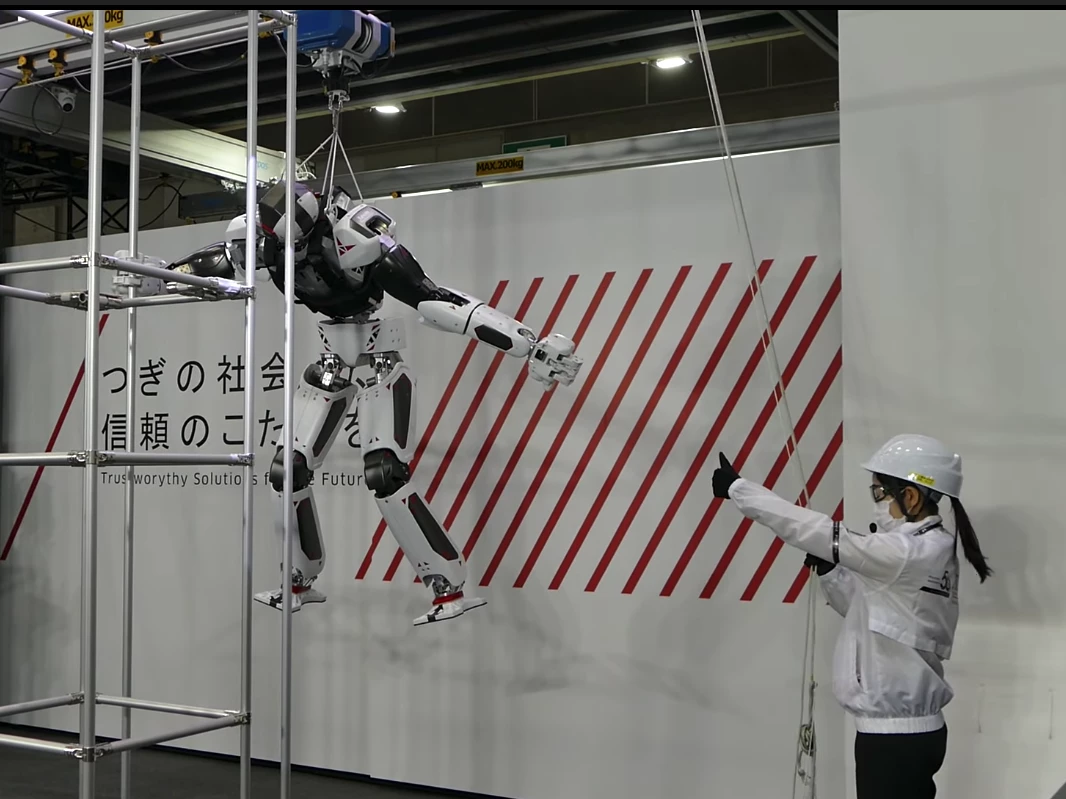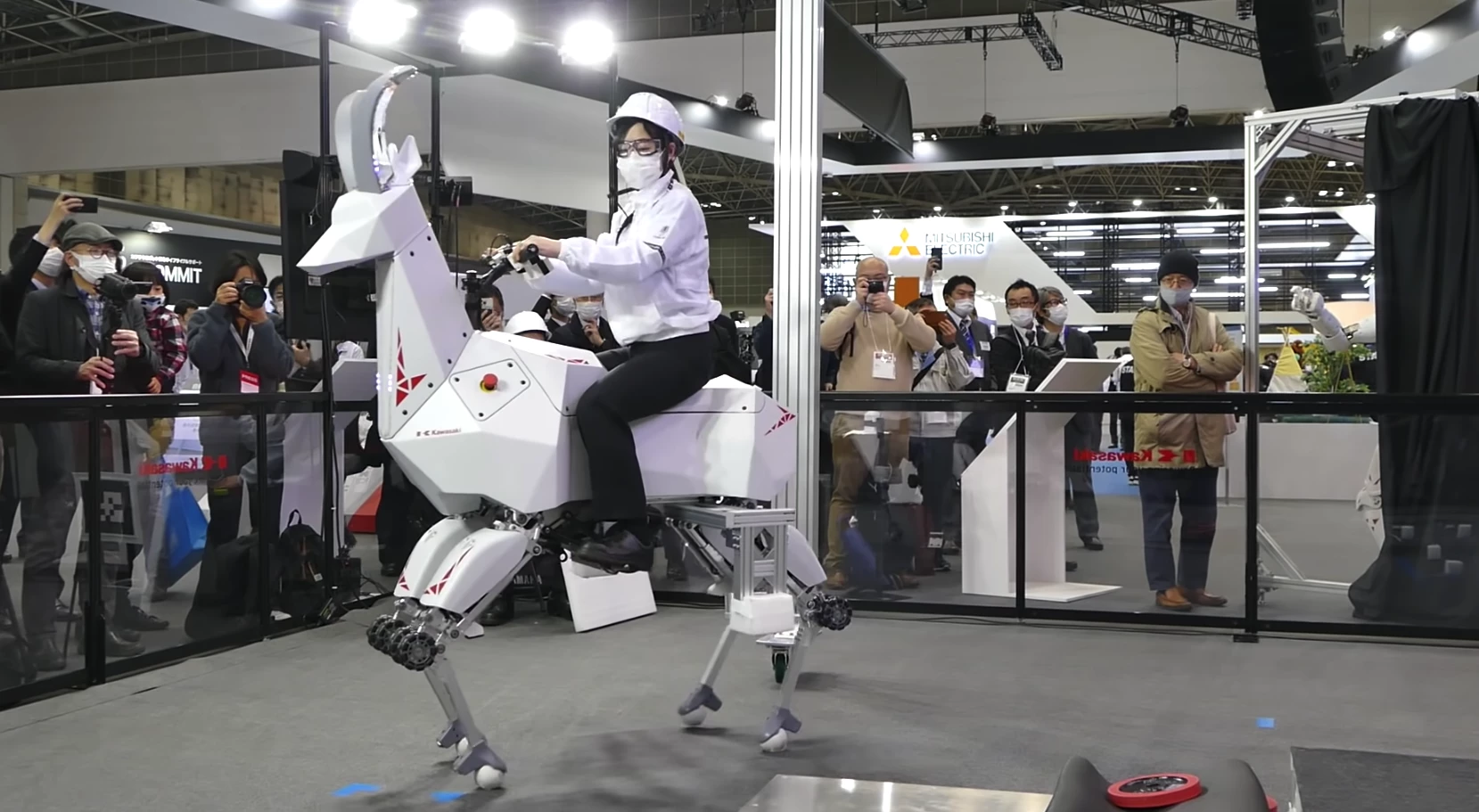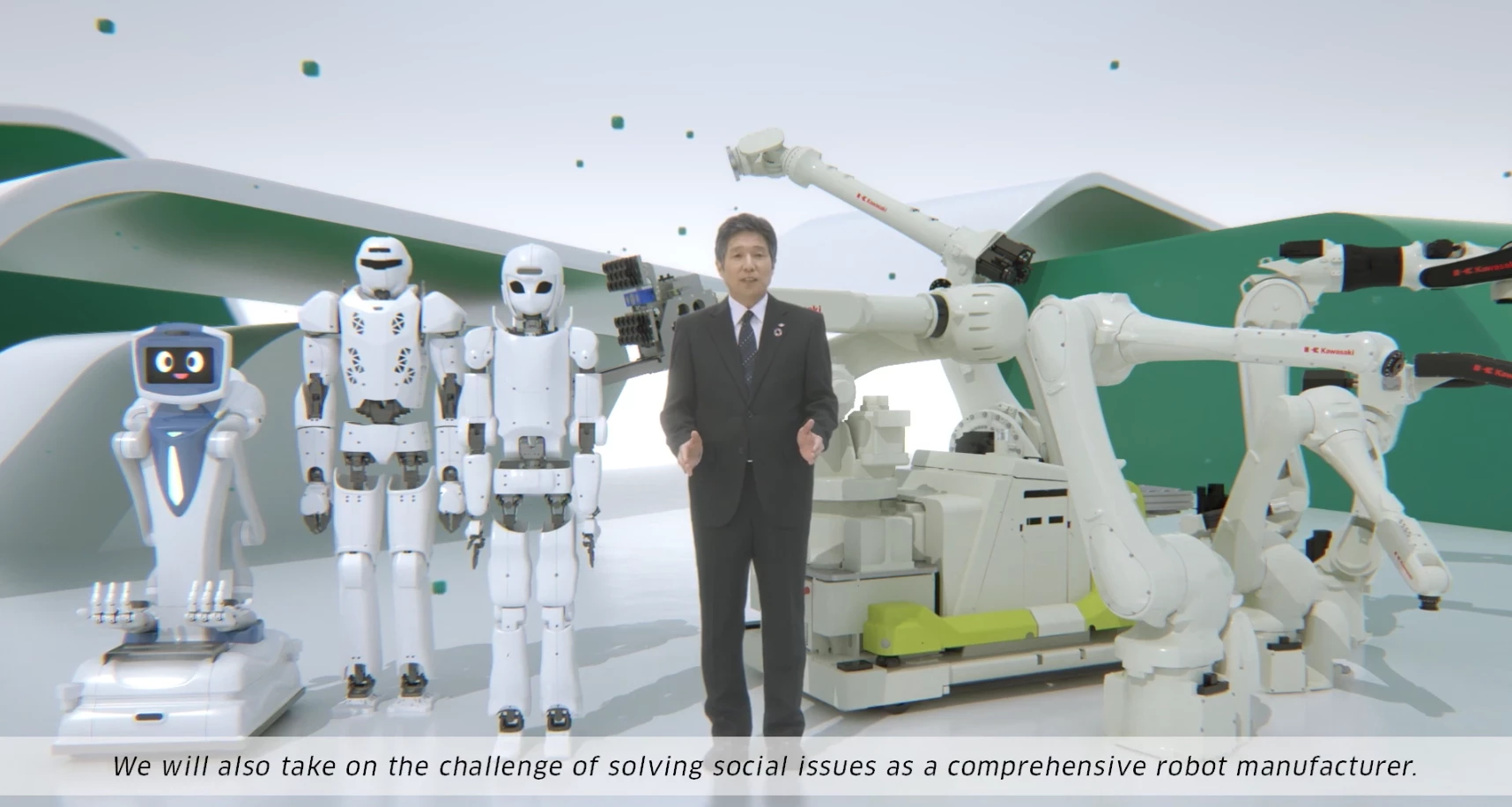Kawasaki Heavy Industries has plenty of experience mass-producing industrial robots, and now we get to see some of its early progress into service robots, multi-purpose humanoids, and, for some reason, a very silly-looking ride-on robot ibex.
While the brand is known mainly as a motorcycle company in the West, Kawasaki is a 125-year old multidisciplinary, multinational powerhouse pulling in some US$15 billion of revenues in 2020 across the aerospace, rail, shipbuilding, energy, industrial, environmental and infrastructure segments, among others.
But at iREX 2022, Tokyo's International Robot Exhibition, the company showed its softer, stranger side. Kawasaki has had a team working on a "Robust Humanoid Platform" called Kaleido since 2015, a tall, broad-shouldered beast of a fellow weighing 80 kg (176 lb), designed eventually to sub in for humans in manual labor situations.

The team presented the 7th generation of Kaleido at iREX, with Kawasaki's Robot Division general manager Noboru Takagi proclaiming, "It is now possible to do actual work in a work site with a combination of autonomous operation and remote control," and, "the practical application of this is only one step away."
But it doesn't seem like Boston Dynamics needs to be looking over its shoulder too much at this point. Kaleido stepped out for its demonstration slot with two human team members holding tether ropes, and proceeded to bust a couple of stilted dance moves before stepping up onto a balance beam, stepping down off the other end, pausing for applause, then turning around, walking back across the beam, and waving goodbye. This took a painful eight minutes. Watch some video, if you've got a lot of time on your hands. When you're done with that, check this out.
A subsequent demonstration lifted Kaleido up into the air on tethers, accompanied by a high-energy, eight-minute extended version of Bon Jovi's It's My Life. Thus dangled, he demonstrated his ability to grab metal bars, beat them with his fists, and crack out a very swaggy, if extremely slow, thumbs-up for the ladies.

The company then introduced a smaller, 55-kg (120-lb) robot it's calling "Friends." Friends is derived from Kaleido, but it's designed to be safe for working and interacting with humans. Kawasaki sees this as the kind of robot people might end up living with – particularly older people, as Japan's rapidly aging population is expected to face growing isolation and unmet needs for assistance with personal care.

Friends had two stage appearances, one in which it did a bit of gentle motion-captured dancing, and another in which it pushed an extremely patient, wobbly-headed grandma dummy around in a wheelchair. In four minutes, it managed to advance around five meters, then turn around, pausing apparently to kiss granny on the head, and push her back out the gate.
But the star of Kawasaki's iREX demonstrations by far was RHP BEX, the company's first quadruped. Eventually, BEX will handle rough terrain, says Kawasaki, carrying loads up to 100 kg (220 lb) on its back and performing a range of inspection tasks and carrying things around in agricultural settings.

To demonstrate its capabilities, BEX inched its way to the front of the demo area on foot then squatted down and rolled around a bit on some wheels, stopping to allow a team member to hop on board and grab a pair of handlebars sprouting from its neck. Possibly the slowest and shakiest Kawasaki joyride in history ensues.
We embed a video below from one Kazumichi Moriyama, who has the patience of a saint and was covering the event for PC Watch. Clearly, these are still relatively early-stage efforts for Kawasaki, in a notoriously difficult field, but these kinds of presentations do little to cement this storied company as a serious competitor in this space.
Source: Kawasaki










